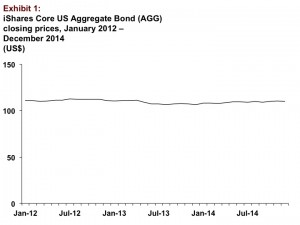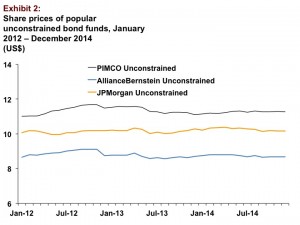A new and complex dynamic has emerged in securities finance, whereby institutional investors are pulling assets from long-only fixed income portfolios in their agency securities lending programs. These funds are going into unconstrained fixed income portfolios (or nontraditional bond funds), now a US$153 billion investment category, up from US$51 billion in 2011, according to Morningstar. This multi-faceted issue moves the responsibility for financing around and increases risk, hopefully with the outcome of also increasing rewards. It also brings up questions in institutional investor thinking about the process and policies in their securities lending programs.
A dominant theme in the history of institutional securities lending programs accepting cash collateral has been a prohibition on the use of derivatives in both structured loans and cash reinvestments. The history for this restriction is well documented including famous blowups like Orange County, California in 1991, or losses from Structured Investment Vehicles (SIVs) like Cheyne Finance and Sigma Finance in 2007 and 2008. We have spoken with multiple institutional investors over the years who say that the idea of investing cash collateral in any sort of derivatives products would be completely unacceptable to their boards of directors. The type of derivative does not matter; the fact remains that so long as a product is called a derivative, it is not considered an acceptable cash collateral investment.
Meanwhile, the arguments against core bond funds are easy to identify. In the three year period of January 2012 to December 2014, the price of the Barclays Capital Aggregate Bond Index barely moved. The iShares Core Aggregate Bond ETF, better known as AGG, actually declined by 1% in this period (see Exhibit 1). As most pensions have actuarial target rates of return of 6% to 8%, a negative 1% performance is entirely inadequate. Even adding in a few basis points for securities lending returns makes no noticeable improvement, especially when cash is placed into overnight repo or similar low return investments. It is no wonder that an institution would look elsewhere for performance.

A popular option to replace core bond funds has been unconstrained bond portfolios. According to AllianceBernstein’s summary prospectus of its unconstrained bond fund, “The Fund invests, under normal circumstances, at least 80% of its net assets in fixed-income securities and derivatives related to fixed-income securities.” The use of derivatives is not limited to plain vanilla options and futures. “The Fund will seek to achieve negative duration through the use of derivatives, such as futures and total return swaps…. The Fund may use borrowings or other leverage for investment purposes. The Fund intends, among other things, to enter into transactions such as reverse re- purchase agreements and dollar rolls.”
Theoretically this leverage should produce outsized returns. In practice however, the returns of three popular unconstrained bond funds, including offerings from PIMCO, AllianceBernstein and JPMorgan, ranged from 0.3% to 2.4% over the January 2012 to December 2014 period (see Exhibit 2). While better than the negative return of the iShares Core US Aggregate Bond (AGG) fund, these unconstrained funds are not necessarily reaching to the actuarial hurdle needed by pensions to ensure adequate retirement funding. From their high points of November 2012 to December 2012, these funds actually lost 0.3 to 5% in share value. AGG lost 2% in this same time period.

We observe that institutional investors appear more comfortable with unconstrained bond funds than with leverage in their securities lending cash collateral portfolios. This may be because of the institutional reputations of asset managers, who could be seen as more trustworthy than securities lending agents or internal cash portfolio management teams. It may also be the mystique of the unconstrained bond portfolio as having more leeway than a core bond portfolio, hence positive swings can be higher. Whatever the cause, the fact remains that institutional investors are more likely to accept leverage, including swaps and repos, in the unconstrained format than in a securities lending cash collateral portfolio.
This situation leaves the market in a shifting of the deck chairs, not on the Titanic as we see no immediate crisis ahead, but for market players. Securities lending operates through one set of legal agreements that often include counterparty default indemnification and an understanding of one channel of counterparty risk. Unconstrained bond funds are engaging in options and futures through a clearing agent and swaps and repos with bilateral bank counterparties. Options and futures are backed by the risk waterfall of a central counterparty (CCP), swaps may be cleared or uncleared, and repos are mostly uncleared with bilateral counterparty exposure.
Are institutional investors right to preference unconstrained bond fund leverage over securities lending leverage? This is a question for each individual investor and not for us to judge. However, we observe a disconnect in the thinking about these leverage options. It would seem to make fairer sense to line up the risks and rewards in parallel columns. If securities lent from core bond funds receive cash collateral, and that cash collateral is invested in a similar style to an unconstrained bond fund, that would be a net reduction in risk given the 102% or greater collateralization in a typical securities lending transaction, not to mention the counterparty default indemnification that remains (as of this writing) a free benefit to the market. Institutions may want to consider these options, particularly as the exposure of the unconstrained bond fund can lead to more volatility than the typical securities lending program.


